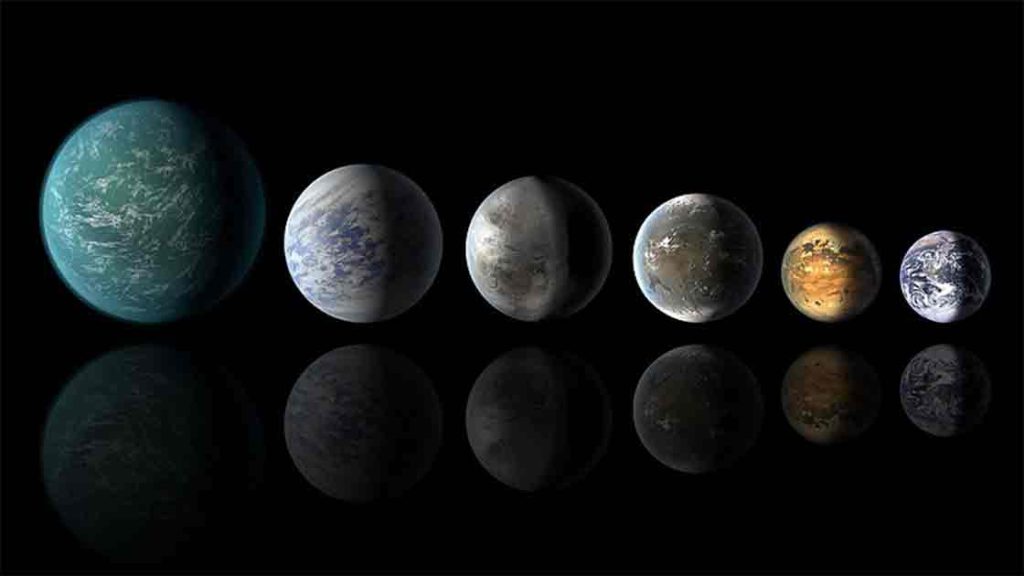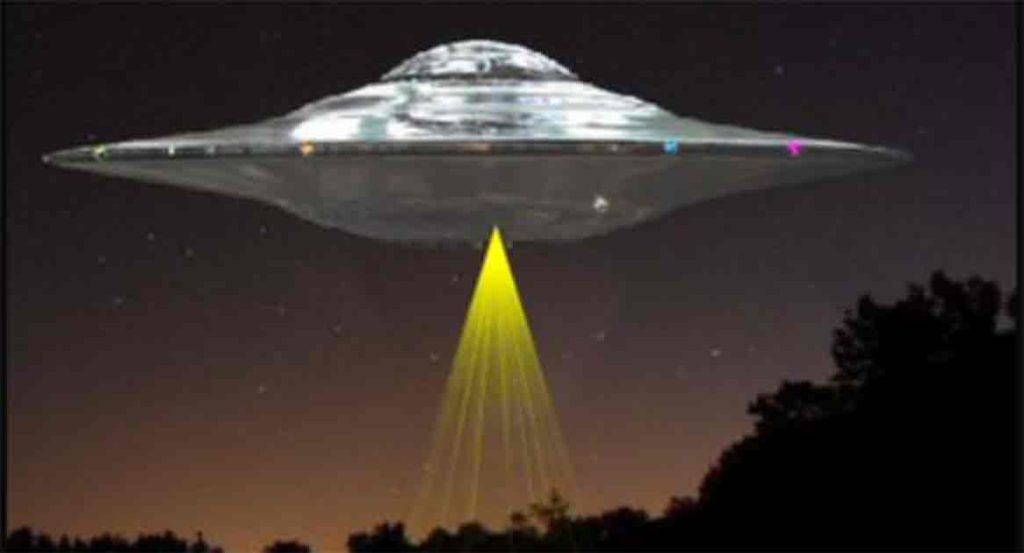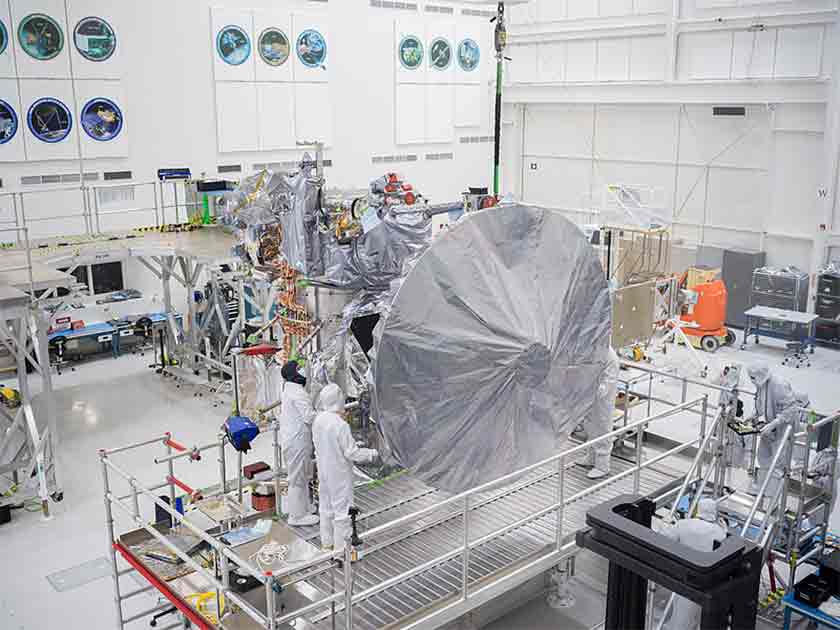“But where is everybody?” This simple question, blurted out by physicist Enrico Fermi while walking to lunch and discussing extraterrestrial intelligence, contains one of the strangest and most alarming problems about our knowledge of the universe.
Put simply, the Fermi Paradox highlights a glaring contradiction. The universe is vast, and filled with habitable planets. Evern given our understanding of the physical limitations of interstellar travel and how slow such exploration would be, it would be trivial for a single intelligence to have spread out across the galaxy by now, perhaps not in person but with self-replicating probes which are within the technological reach of humanity even today.
Why then has this not happened? Why, further, have we found absolutely no evidence of alien civilizations? Where, as Fermi said, is everybody?
The Vastness of the Cosmos and the Expectation of Life
The universe is incomprehensibly vast, containing hundreds of billions of galaxies, each teeming with stars and planets. The Milky Way alone is home to over 100 billion planets.
With the discovery of ever more exoplanets, many of which reside in the “habitable zone” where conditions could support life as we know it, the statistical likelihood of alien life seems almost inevitable. This makes the silence from the cosmos even more confounding.
The fundamental question that the Fermi Paradox poses is this: if the universe is teeming with potentially habitable planets, some of which may have developed intelligent life, why is there no definitive evidence of their existence?

The more this problem is studied, the more bizarre the gap between what we see and what we should expect becomes. Any civilization with humanity’s understanding of the physics of the universe should be able to construct what are known as “Von Neumann Probes”.
These self-replicating probes, automated without the need for a biological crew, could spread out across any galaxy in a trivial amount of time given the timescales involved. Arriving at new star systems they would harvest the available resources to build an exponentially growing number of identical probes, who would in turn travel onwards until they had visited everywhere.
- Dark Forests, Gravity Wells and Carbon: We Need to Talk About Aliens
- Dyson Spheres: Could We Build Our Own Gargantuan Hollow Earth?
This should have happened by now, many, many times. In fact, to carry the thought experiment to its logical conclusion, Von Neumann probes should have exhausted all useful material in the entire galaxy long ago, using everything up to make an army of themselves.
And yet… nothing. We have seen no evidence that this has happened. Not a single one of the potentially billions and billions of worlds out there made the decision to launch such probes. Furthermore our scouring of the skies above us has come up with no other evidence of any kind, from any quarter, that tells us we are not alone. Evidence should be everywhere, but there is none.
Several theories have been proposed to explain the Fermi Paradox, each offering a different perspective on the possible nature of extraterrestrial civilizations and their absence from our cosmic neighborhood.
Perhaps the most straightforward is what is known as the “Rare Earth Hypothesis”. This theory suggests that while microbial life might be relatively common in the universe, complex life forms are exceedingly rare. Factors such as a planet’s specific orbital characteristics, geological activity, and protective magnetic fields might be far less common than we think, making Earth exceptionally unique.
The most daunting, on the other hand, is called “The Great Filter”. This theory posits that all life forms encounter a nearly insurmountable obstacle at some point in their development, which prevents them from advancing to a stage where interstellar communication or travel is possible.
This barrier could be anything from the development of eukaryotic cells and the birth of life itself, to the survival of technological advancements without self-destruction.
Perhaps a more fanciful idea is the “Zoo Hypothesis”. According to this idea, advanced civilizations are aware of us but have collectively decided to refrain from making contact, observing us in a way similar to how we might observe animals in a zoo. This theory assumes that interstellar civilizations all agree to allow younger species to evolve naturally, without outside interference, which seems far-fetched.

Perhaps the civilizations themselves may be fleeting on a cosmic time scale. These so-called “Transient Civilizations” are born and die out in too short a time frame to get their act together and colonize the stars. Another possibility is that might develop the technology to communicate over vast distances but soon self-destruct or lose interest in external communication.
This ephemerality of advanced civilizations could mean that the windows during which two intelligent species can contact each other are incredibly narrow. And that would be the point at which humanity finds itself today, but it does not explain the lack of space archaeology from past intelligence, long dead.
In addition to these mainstream theories, some lesser-known ideas also attempt to address the Fermi Paradox. One such theory is the possibility of a post-biological universe, where advanced beings have transitioned from biological forms to digital existences, reducing their need or desire to explore the physical universe.
Alternatively, civilizations might be spread too thin across vast distances, or their signals or artifacts might be undetectable with our current technology and understanding. The problem with most of these ideas is that they attribute individual whimsy to an entire species, equating decision making at the individual and species-wide level, when these are two very different things.
- Spooky Action at a Distance: Quantum Entanglement and FTL Communication
- Project Blue Book: What did the US conclude about UFOs?
But the paradox remains, and despite a solution proving elusive it can teach us one thing. Unless we are the first intelligent life in our galaxy, which is extremely unlikely given what we know about it, something stops civilization from ever reaching the stars. We are doomed to die, at some point in the future, eaten up by whatever removed everyone that came before.
The Role of SETI and Future Missions
Despite the absence of evidence, efforts to detect signs of extraterrestrial intelligence continue unabated. The Search for Extraterrestrial Intelligence (SETI) uses powerful telescopes to scan the stars for signals that could indicate the presence of intelligent life.
Future missions, both terrestrial and space-based, aim to explore exoplanets in more detail, studying their atmospheres for signs of life. Technological advancements might eventually allow us to detect bio-signatures or techno-signatures that could provide conclusive evidence of alien life.

In October 2024 the Europa Clipper launches to travel to Europa, a moon of Jupiter. Europa’s unique topography which combines an icy crust and a molten core allows for the possibility of a hidden layer of liquid water in between, a huge underground sea blanketing the planet. Many see Europa as the best candidate for extraterrestrial life, and it is for this that the Clipper will be looking.
Many worry about what happens if life is found there. Far from Earth being unusual, the discovery of another source of life within our own solar system drastically changes our perspective on how easy it is for life to evolve. If it truly is this easy, the paradox becomes stranger still.
The Enigma Continues
The Fermi Paradox remains one of the most compelling mysteries in our quest to understand our place in the cosmos. It challenges our expectations about the universe and our understanding of life itself.
While we have not yet found the answers we seek, the search continues to inspire both scientific inquiry and philosophical debate. Whether we are alone in the universe or part of a vast network of civilizations, the quest for knowledge and the exploration of the unknown continue to drive humanity forward.
As we peer deeper into the cosmos, perhaps one day we will find that we are indeed not alone. But until that day comes, the mystery of the silent universe remains a profound and provocative enigma, and one which leads our potential future into some very dark places indeed.
Top Image: Fermi’s Paradox is simple to understand but leads to some very dark conclusions about our own society and our hopes for immortality in the stars. Source: Ian Norman (http://www.lonelyspeck.com) / CC BY-SA 2.0.
By HM Editorial Staff
References
Space.com, 2023. Fermi Paradox: Where are the Aliens? Available at: https://www.space.com/25325-fermi-paradox.html
Britannica, 2024. The Fermi Paradox: Where Are All the Aliens? Available at: https://www.britannica.com/story/the-fermi-paradox-where-are-all-the-aliens
SETI Institute, 2024. Fermi Paradox. Available at: https://www.seti.org/fermi-paradox-0